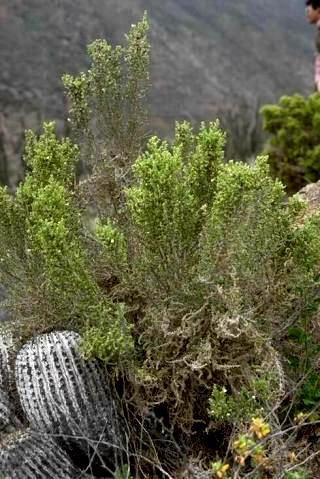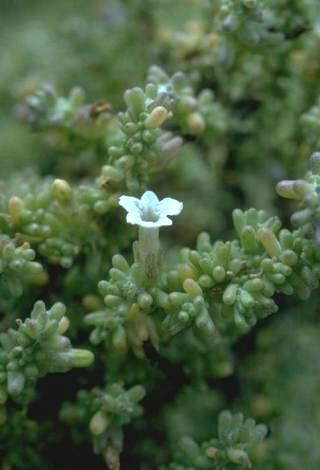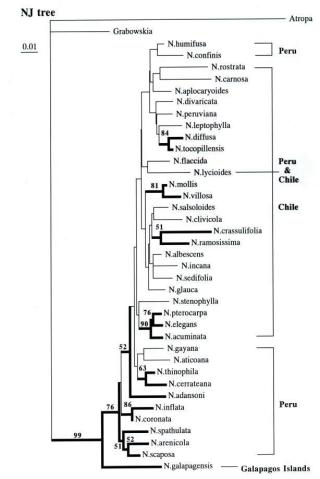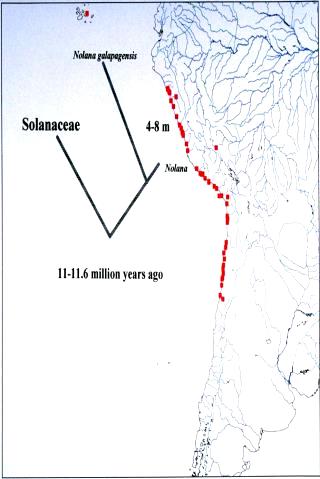|

|
Most species of Nolana are narrow endemics, with small, restricted geographic ranges and specific ecological requirements. Only one species, Nolana galapagensis (Christoph.) I.M.Johnst., has a distribution outside of continental South America. The Galápagos Islands are located on the Equator, ca. 500 miles (~840 kms) west of mainland Ecuador. N. galapagensis is recorded from seven islands within the Galápagos Island chain: Coamaña, Isabela, San Cristobal, Santa Cruz, Santa María (or Floreana), Seymour, and Tortuga (Wiggins & Porter, 1971; Eliasson, 1970; A. Tye, pers.). The plants are found in near beach localities within a few meters of the ocean. |
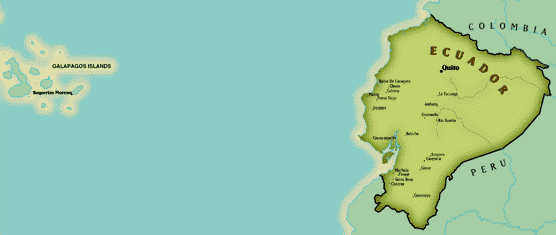 |
|
Galápagos Islands are separated from mainland Ecuador by over 500 miles or 840 kms of Pacific Ocean. |
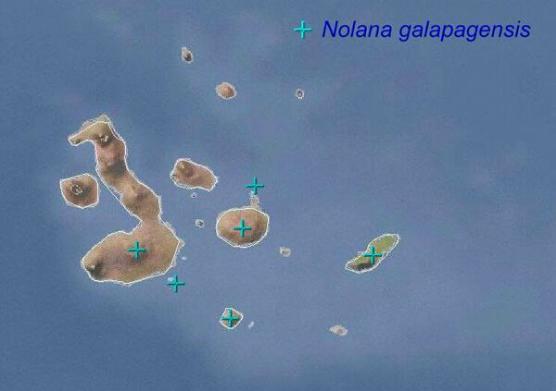 |
|
Nolana
galapagensis population distributions [+]
|
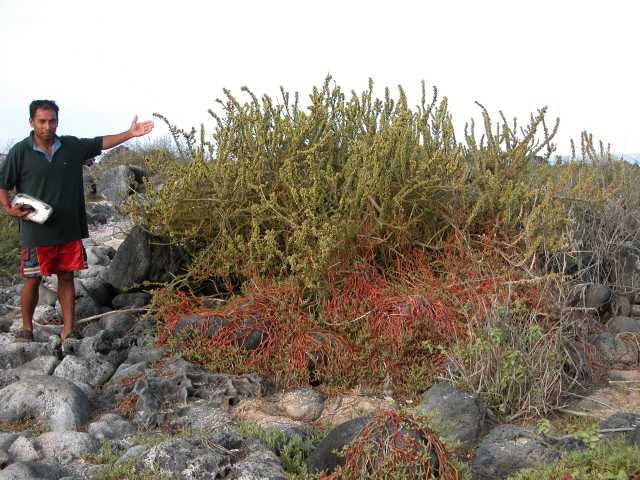 Boat Captain Armando Leon on Isla Coamaña. Red stems at the base of the shrub are Sesuvium portulacastrum. |
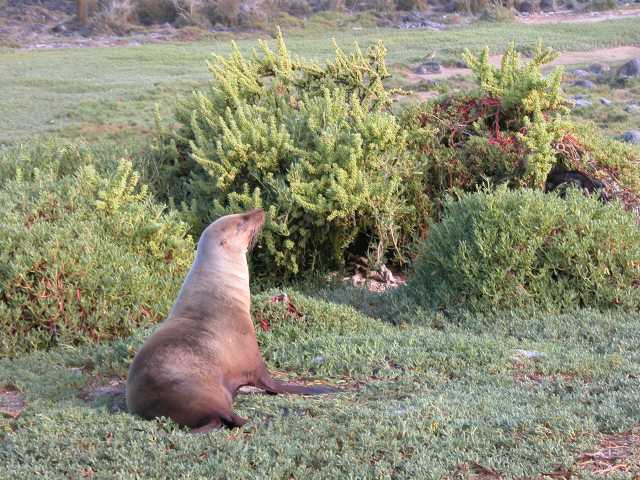 Sealions lounge in the shade of Nolana shrubs |
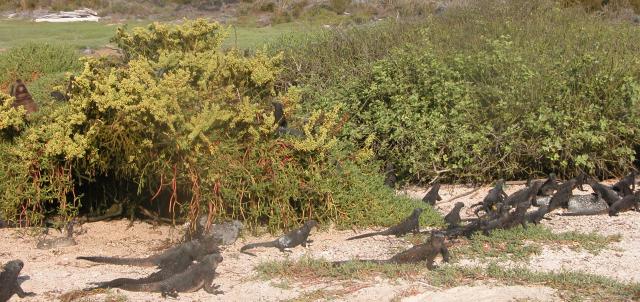 Marine iguanas seem to prefer climbing into Nolana shrubs. Evidence of feeding on the succulent Nolana leaves must be confirmed. |
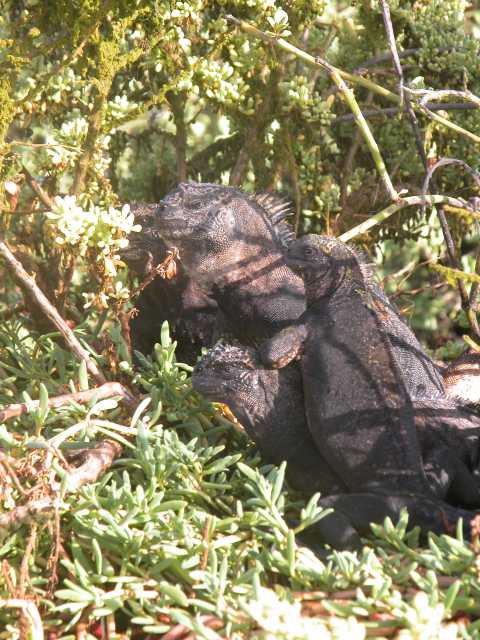 ~ ~
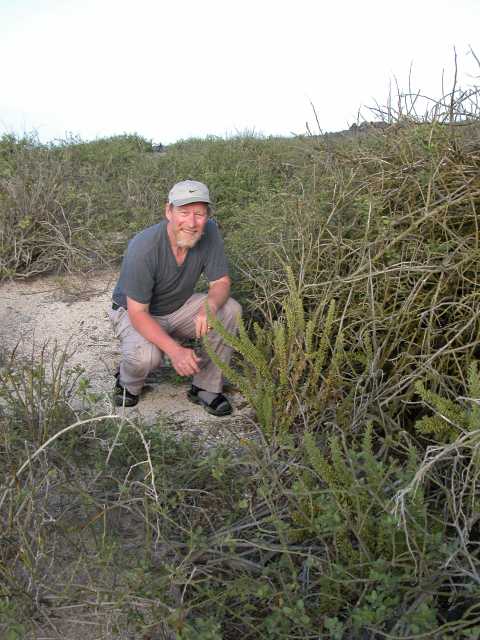 |
|
Nolana
galapagensis may be a food plant for marine iguanas (left).
With seedlings present, they appear to be reporducing (right). |
 ~
~ 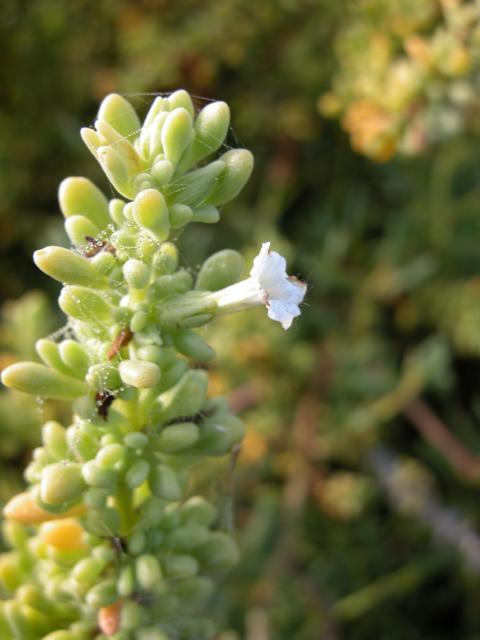
|
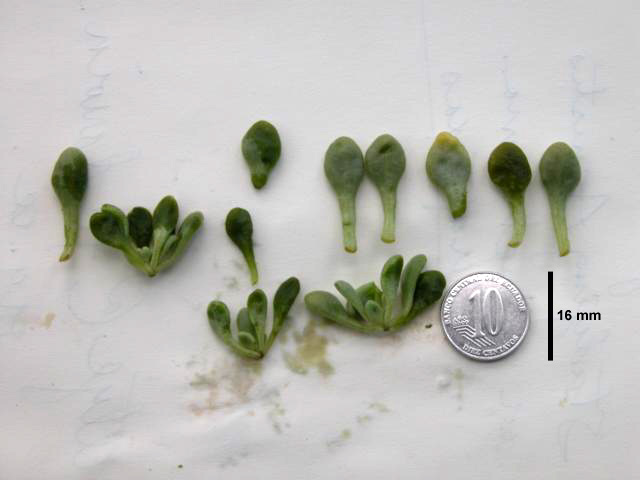 |
| Nolana galapagensis has highly succulent leaves, often densely faciculate. |
|
Our preliminary divergence data allows the calculation of a range of potential dates for the arrival of Nolana within the Galapagos Islands. In the ITS analysis, divergence values for N. galapagensis approach those of the outgroup taxon, Grabowskia. This high level of sequence divergence may be the product of long-term isolation on islands from continental relatives or some other phenomenon such as founder effect or genetic drift. Reported values suggest an average rate for ITS calculated at 5.20 x 10-9 per site per year (Tago, 1999). If this rate is adopted for Nolana, the divergence time of Nolana from the closest taxon in the Solanaceae is estimated to be 11.6 million years ago (Fig. 6). Further, ITS sequence data suggests that the divergence time of N. galapagensis from the rest of Nolana species is ca. 8.1 million years ago. In comparison, the nucleotide substitution in the coding region of the matK gene provided an average substitution rate of 4.10 x 10-10, with the divergence time of Nolana from the closest taxon in the Solanaceae is estimated at 11.0 million years ago. With matK sequence data, the divergence time of N. galapagensis from the rest of Nolana is estimated to be 4.0 million years ago. Geological evidence points to an age for the current Galápagos archipelago at 4-5 million years, but underwater seamounts may date to 15-20 million years (Grehan, 2001). Molecular clock calibrations for determining colonization events may provide estimates that exceed the age of the modern islands.
|
[Return to Nolana Supplement] -- [Return to Galápagos Introduction]
|
Literature CitedEliasson, U. H. 1970. Studies in Galápagos Plants IX, New Taxonomic and Distributional Records. Botaniska Notiser 123: 346-357. Grehan, J.R. 2001. Biogeography and evolution of the Galapagos: integration of the biological and geological evidence. Biol. Journ. Linn. Soc. 74: 267-287. Tago-Nakawaza, M. & M.O. Dillon. 1999. Biogeografía y Evolución en el Clado Nolana (Solaneae-Solanaceae). Arnaldoa 6(2): 81-116. 1999 (2000). Wiggins, I. L. & D. M. Porter. 1971. Flora of the Galápagos Islands. Pp. 1-998. Stanford University Press, Stanford, California.
Click on images for enlargements |
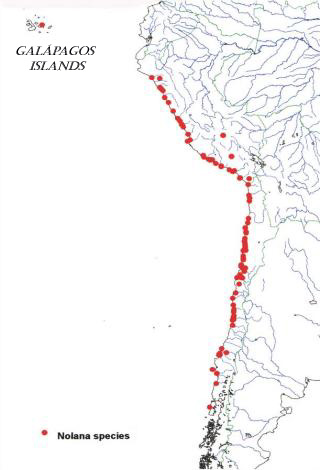 |
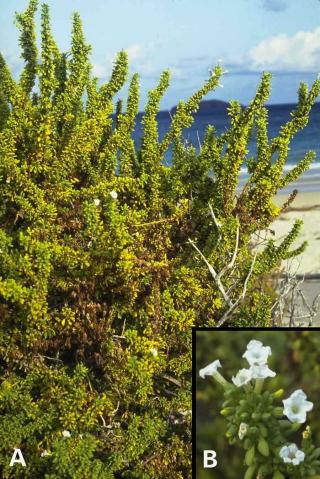 |
| Geographic distribution of Nolana. | Nolana galapagensis. A. Habit. B. Flowers. |
|
Morphologically, Nolana galapagensis most closely resembles N. sedifolia of northern Chile. Not until we have completed our sequencing work can look more closely at potential relationships. |

